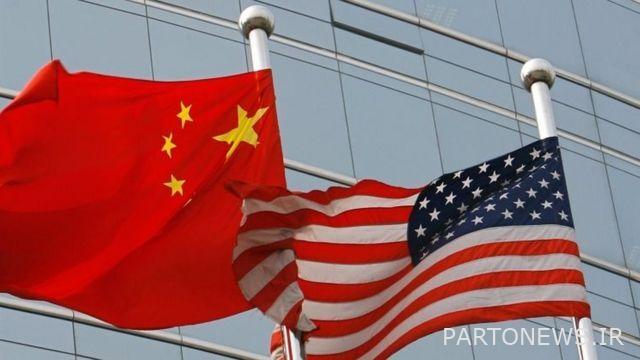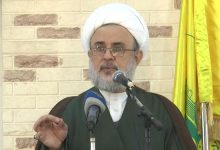China and the United States on the path to a hot war?

Khorasan newspaper published a note written by Nabi Sharifi on the 8th of Aban and wrote: In an interview, the Taiwanese president explicitly endorsed last month’s Wall Street Journal report on the presence of US troops on the island, aimed at training Taiwanese forces. The fact that Taipei does not hide its official relations with Washington despite the US commitment to the “one China” policy is a new phenomenon in the political relations between the two governments.
One reason for this stance is recent remarks by US President Joe Biden that Washington is committed to defending Taiwan in the event of a Chinese military invasion of the island. This is against US policy toward China and Taiwan over the past four decades. A policy known as “strategic ambiguity” in which the United States assisted Taiwan’s defense system despite tensions; But he did not publicly promise to defend the country against China. This change in Washington’s approach is the latest US move to advance China’s containment project. A project unveiled a decade ago by former US President Barack Obama as part of a strategy to turn East Asia.
Despite his differences with Democrats and Obama’s achievements, Donald Trump has taken this path to his liking, in the form of a telephone conversation with the President of Taiwan, a “trade war” and an attack on Beijing to spread the Corona virus. Trump’s most important move, however, was the signing of the “Ibrahim Pact” to normalize relations between the Arab Gulf states and Israel, along with the start of the military withdrawal process from Afghanistan. Following the same path to reduce the military presence in the Middle East and move the center of gravity of the competition to East Asia, Joe Biden withdrew all his troops from Afghanistan, although his management of the withdrawal was severely criticized.
Military confrontation was not a US priority
There are suspicions of rising tensions on China’s east coast and the US-allied war with Beijing. But now these developments are like small sparks that have not ignited a fire. Despite Joe Biden’s recent remarks, the truth is that in the face of China, military confrontation was not a US priority. Nevertheless, China’s slow and steady rise, along with US neglect, has pushed Washington in that direction.
Beijing’s growth, both economically and militarily, in recent decades (especially since the beginning of the 21st century) is like an airport runway. The Chinese plane was moving forward, but because its wheels were still rubbing against the runway floor, Washington was unaware of this progress, and suddenly the plane took off and the United States woke up. There were various reasons for Washington’s prolonged drowsiness. Including fighting on several fronts in Afghanistan, Iraq, Libya and Syria, which effectively deprived them of the opportunity to focus on the Chinese uprising. After a bit of vigilance, Trump-era America set out to overthrow China, which had become the world’s second-largest economy, by avoiding serious military tensions and provocations, relying on trade wars and supporting Hong Kong protesters.
Trade wars, however, did not go well with Washington, and Hong Kong protesters were suppressed with an iron fist by President Xi Jinping, along with the passage of new judicial laws. The military option is now being considered as one of the US choices. Equipping and training the Taiwanese military, sending aircraft carriers to the South China Sea, signing the ACOS military agreement with Britain and Australia to build a nuclear-powered submarine are some of Washington’s steps to implement this decision. To these must be added the lifting of the South Korean missile range and the construction of the ship by Japan. Accordingly, the United States, unable to contain China, is trying to limit China by shaping the environment in which Beijing is growing.
Military confrontation is not China’s priority
In contrast, China is not a country that the United States can confront militarily. It has become the third largest military power in the world after the United States and Russia. China, a nuclear power for decades, has developed and developed military weapons in recent years. With the rapid growth of military technology, Beijing, which launched its first aircraft carrier three years ago, is building its second aircraft carrier at Shanghai berths. Despite this increase in power, military confrontation with the United States and its Western allies is not a priority for China. In the South Sea, Beijing provokes its neighbors over disputed islands such as the Philippines, Vietnam and Malaysia, sends dozens of fighter jets and bombers into Taiwan’s skies, speaks forcefully to Washington, but in practice is wary of serious military tensions. It is with America.
Economic stability and protection is the biggest reason for China’s restraint in the face of provocative actions by the United States and its allies. It was China’s penetration of the US economy that prevented Trump from achieving his desired outcome from the trade tariff war. China, led by Xi Jinping, knows that going to war could take this important card out of Beijing’s hands.
So they try to avoid any military tension, at least in the short term. But that does not mean Beijing relinquishes its sovereignty over the island of Taiwan. That is why President Xi Jinping told the Chinese People’s Congress that “no one should underestimate the unwavering will, determination and strength of the Chinese people in defending national sovereignty and territorial integrity.” “The historic task of complete reunification of the motherland must be fulfilled and will certainly be fulfilled.” The Washington-Beijing confrontation in the Taiwan conflict and China’s reluctance to go to war is similar to Saadi’s lyric: “O unseen! “I’m going, he ‘s pulling the hook.”
.

